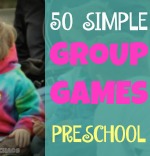Obstacle courses are a simple yet effective way to build children’s foundational balance, coordination, and sensory processing skills. By weaving movement challenges into play, obstacle courses can be used to target and strengthen the vestibular system, which is key for a child's ability to process motion, maintain balance, and coordinate movement. Activities such as jumping, crawling, spinning, and balancing challenge the brain’s ability to sense changes in head position and motion.
These active play sessions can be done at home using everyday objects and adjusted to suit a child’s age and needs. Adding movements found in structured vestibular system exercises can make an obstacle course even more effective at providing the right sensory input for development. For anyone looking to support a child’s sensory growth, obstacle courses offer a flexible, fun solution.
Content provided on this page should not be considered as medical advice or diagnosis. Always consult with your healthcare provider before making medical decisions.
Key Takeaways
Obstacle courses are an accessible way to build balance and coordination.
The vestibular system can be targeted by adding movement challenges.
Combining obstacle courses with vestibular system exercises supports sensory development.
Understanding the Vestibular System and Obstacle Courses
The vestibular system is essential for stable posture, balance, and knowing where the body is in space. Obstacle courses provide dynamic sensory experiences that target this system, offering structured and purposeful movement challenges.
How the Vestibular System Impacts Balance and Movement
The vestibular system, located in the inner ear, detects head position and motion. It works with the eyes and muscles to help maintain balance and coordinate movement. This process is crucial for activities like walking, jumping, turning, or even sitting upright.
Vestibular input gives the brain real-time updates about how the body moves through space, which helps with spatial orientation. Children and adults rely on vestibular feedback for smooth, coordinated actions and quick reactions to changes in their environment. Disruptions or delays in vestibular processing may cause dizziness, poor balance, or clumsiness. That’s why targeted movement activities are essential for developing and refining these skills.
The Role of Obstacle Courses in Sensory Input and Integration
Obstacle courses deliver a rich blend of movements that challenge and strengthen vestibular functions. Activities such as crawling, rolling, spinning, balancing, and climbing force the body to adjust and interpret new positions rapidly. These experiences provide valuable vestibular input, teaching the brain to process complex sensory information. The combination of movement and sensory tasks in an obstacle course supports sensory integration, allowing the nervous system to organize and respond efficiently.
By exposing individuals to quick changes in direction, speed, and elevation, obstacle courses help refine both body awareness and spatial orientation. Adjusting obstacles and tasks can target specific sensory needs, making them an effective tool for therapy or play.
Benefits for Sensory Processing and Motor Skills
Completing obstacle courses can improve balance, body awareness, and motor coordination. These activities encourage children to plan and execute complex movements, building both gross and fine motor skills.
Regular practice helps the brain connect sensory input with appropriate physical responses. This promotes better posture, control, and confidence in daily activities. For children with sensory needs, obstacle courses can serve as a “reset” or calming strategy, supporting self-regulation and attention. Obstacle courses also provide opportunities for motor planning and cooperation with peers or therapists. As a result, they support the development of both physical and social skills in a motivating and play-based way.
Designing and Using Obstacle Courses to Support Vestibular Development
Carefully designed obstacle courses can target core areas like balance, core strength, and motor planning through dynamic activities that activate the vestibular system. Using a strategic mix of movement challenges and varied sensory equipment helps encourage equilibrium, stability, and body awareness in children.
Choosing Vestibular Activities for Obstacle Courses
Selecting appropriate activities is important for engaging the vestibular system. Movements that require children to change their head position, move in multiple directions, and navigate unstable surfaces are especially effective. Examples include balance beams, wobble boards, balance boards, and hopping paths using cones.
Adding crawling through tunnels or climbing over padded blocks helps integrate gross motor skills and bilateral coordination. Incorporating activities like yoga poses or standing on one leg also develops balance and core stability. Obstacle courses that combine these activities support motor planning and proprioceptive input, both essential for functional independence and coordination.
Incorporating Spinning, Rolling, Swinging, and Jumping Elements
Including spinning, rolling, swinging, and jumping elements in an obstacle course boosts vestibular input and helps children adjust to changes in head and body position. Equipment options include a platform swing for swinging, a sit-and-spin toy for spinning, and soft mats for rolling.
Trampolines and hopping paths focus on jumping, which also provides proprioceptive feedback. Hammocks, scooters, and scooter boards allow for swinging and pushing motions, adding further stimulation for the vestibular system. Allowing children to move through these stations at their own pace helps them practice balance, respond to changing sensory needs, and improve their equilibrium. These components also enhance bilateral integration and core strength.
Conclusion
Obstacle courses are a practical tool for helping develop the vestibular system, supporting balance and coordination through play and movement. Activities such as crawling, jumping, and navigating tunnels encourage sensory integration while refining motor planning skills.
Therapists often design obstacle courses to target specific needs, making them flexible and adaptable for different age groups and abilities. Consistent participation in obstacle course activities can help children build foundational movement skills. These benefits can support daily functioning and greater participation in physical play.
Recommended:
Games for Preschool Group Play
Games for Camp (Amazon Affiliate Link)
































